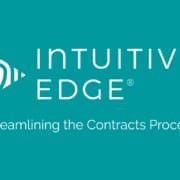The $75 Million Oversight: The Imperative of Contract Due Diligence in M&A
 In the complex and high-stakes realm of mergers and acquisitions (M&A), the devil truly lies in the details—specifically, within the dense text of contracts. The tale of the Columbus acquisition serves as a stark reminder of this truth, where excitement and oversight led to a staggering $75 million loss, all due to neglected customer agreements with burdensome rebates and unfavorable pricing terms. This incident underscores a crucial lesson: comprehensive contract due diligence is not just beneficial; it’s essential.
In the complex and high-stakes realm of mergers and acquisitions (M&A), the devil truly lies in the details—specifically, within the dense text of contracts. The tale of the Columbus acquisition serves as a stark reminder of this truth, where excitement and oversight led to a staggering $75 million loss, all due to neglected customer agreements with burdensome rebates and unfavorable pricing terms. This incident underscores a crucial lesson: comprehensive contract due diligence is not just beneficial; it’s essential.
The Columbus Deal: A Cautionary Tale
The oversight of Columbus customer agreements—laden with costly rebates and restrictive pricing—was a critical error. These terms, overlooked during the deal negotiation phase, became painfully apparent post-acquisition, locking the new owners into financially detrimental agreements with no easy exits. This scenario, while distressing, is not unique in the world of M&A, where the failure to meticulously review and understand contracts can lead to unforeseen financial liabilities and strategic constraints.
The High Cost of Inattention
In the case of the Columbus deal, a hypothetical investment of $500k in thorough contract review and due diligence might have seemed steep at the outset. However, this investment pales in comparison to the $75 million loss incurred due to contractual oversights. More than a financial safeguard, this investment in due diligence would have provided a deep understanding of existing contractual obligations, enabling strategic decisions that could potentially have influenced the acquisition price itself, not to mention avoiding significant post-acquisition financial hemorrhage.
Leveraging Due Diligence for Strategic Advantage
Comprehensive contract due diligence offers more than just risk mitigation; it’s a strategic tool that can shape the entire trajectory of an acquisition. Understanding the nuances of every contract allows acquirers to:
- Identify potential liabilities that could affect the valuation of the deal.
- Negotiate better terms before closing, potentially saving millions.
- Strategically plan post-acquisition integration, aligning contractual obligations with business objectives and growth strategies.
Turning Tables: From Oversight to Insight
The Columbus debacle serves as a powerful lesson for M&A practitioners: due diligence, especially in contract review, should never be a mere surface formality. Instead, it should be viewed as a strategic exercise, an investment in the future success of the acquisition. By allocating resources—both financial and expertise—towards thorough contract analysis, businesses can transform potential pitfalls into strategic opportunities, ensuring that every contract not only aligns with but also enhances their post-acquisition strategy.
In Conclusion
The story of the Columbus acquisition’s $75 million mistake is a call to all involved in M&A to prioritize comprehensive contract due diligence. This process is not just about uncovering potential deal-breakers; it’s about investing in the future success and strategic alignment of the acquisition. Let the Columbus tale be a reminder of the importance of contracts in shaping the outcome of M&A deals, turning due diligence from a perfunctory task into a cornerstone of strategic M&A planning.


 In the complex landscape of mergers and acquisitions (M&A) within highly regulated industries, the importance of compliance, risk mitigation, and cybersecurity cannot be overstated. These critical elements act as the pillars supporting a successful transition process, safeguarding against potential legal, financial, and reputational damages.
In the complex landscape of mergers and acquisitions (M&A) within highly regulated industries, the importance of compliance, risk mitigation, and cybersecurity cannot be overstated. These critical elements act as the pillars supporting a successful transition process, safeguarding against potential legal, financial, and reputational damages. In the world of business, contract management is often visualized as a journey where the path from initiation to conclusion is not just a timeline but a value-generating process. As contracts progress over time, their potential to add value increases with diligent management. However, during mergers and acquisitions (M&A), this timeline is compressed, necessitating swift and strategic actions to extract maximum value and ensure a smooth transition.
In the world of business, contract management is often visualized as a journey where the path from initiation to conclusion is not just a timeline but a value-generating process. As contracts progress over time, their potential to add value increases with diligent management. However, during mergers and acquisitions (M&A), this timeline is compressed, necessitating swift and strategic actions to extract maximum value and ensure a smooth transition. In the high-stakes world of pharmaceutical divestitures, mergers and acquisitions (M&A), the due diligence and contract transition phases are pivotal. These stages are filled with unique challenges and nuances that can significantly impact the success of an acquisition or divestiture. Understanding these nuances is essential for navigating the pharmaceutical landscape effectively and ensuring a smooth transition and integration of assets.
In the high-stakes world of pharmaceutical divestitures, mergers and acquisitions (M&A), the due diligence and contract transition phases are pivotal. These stages are filled with unique challenges and nuances that can significantly impact the success of an acquisition or divestiture. Understanding these nuances is essential for navigating the pharmaceutical landscape effectively and ensuring a smooth transition and integration of assets. In the complex realm of mergers and acquisitions (M&A), two critical phases stand out: transition and integration. While often used interchangeably, these stages hold distinct roles in the success of any M&A venture. Understanding the nuanced differences between them is crucial for business leaders steering their companies through the choppy waters of M&A.
In the complex realm of mergers and acquisitions (M&A), two critical phases stand out: transition and integration. While often used interchangeably, these stages hold distinct roles in the success of any M&A venture. Understanding the nuanced differences between them is crucial for business leaders steering their companies through the choppy waters of M&A. In the fast-paced world of mergers and acquisitions (M&A), the integration phase is where the rubber meets the road. The successful melding of two companies is a complex, intricate process that demands meticulous planning, execution, and oversight. The importance of investing in a skilled transition team cannot be overstated, yet some companies, in a bid to cut costs, underestimate this critical step. This case study explores the consequences faced by a hypothetical company, TechMerge Inc., which learned the hard way that skimping on a transition team can lead to disastrous results.
In the fast-paced world of mergers and acquisitions (M&A), the integration phase is where the rubber meets the road. The successful melding of two companies is a complex, intricate process that demands meticulous planning, execution, and oversight. The importance of investing in a skilled transition team cannot be overstated, yet some companies, in a bid to cut costs, underestimate this critical step. This case study explores the consequences faced by a hypothetical company, TechMerge Inc., which learned the hard way that skimping on a transition team can lead to disastrous results.
 In the intricate process of mergers and acquisitions (M&A), the saying “the devil is in the details” takes on paramount significance, especially when it comes to contract analysis. The allure of broad strategic goals often overshadows the granular scrutiny required during due diligence and transition phases, potentially leading to overlooked pitfalls or unexpected liabilities that can significantly impact the ultimate gain or loss value of a deal.
In the intricate process of mergers and acquisitions (M&A), the saying “the devil is in the details” takes on paramount significance, especially when it comes to contract analysis. The allure of broad strategic goals often overshadows the granular scrutiny required during due diligence and transition phases, potentially leading to overlooked pitfalls or unexpected liabilities that can significantly impact the ultimate gain or loss value of a deal. In the dynamic landscape of mergers and acquisitions (M&A), synergy—the promised result that supposedly transforms two companies into an entity greater than the sum of its parts—often remains elusive. When the anticipated synergy falls short, it’s not merely disappointing; it can significantly undermine the value and potential success of the deal. However, all is not lost. Even when initial synergy seems lacking, there are strategic pathways to create or recover synergy post-M&A, with contract transition playing a pivotal role in this process.
In the dynamic landscape of mergers and acquisitions (M&A), synergy—the promised result that supposedly transforms two companies into an entity greater than the sum of its parts—often remains elusive. When the anticipated synergy falls short, it’s not merely disappointing; it can significantly undermine the value and potential success of the deal. However, all is not lost. Even when initial synergy seems lacking, there are strategic pathways to create or recover synergy post-M&A, with contract transition playing a pivotal role in this process.

